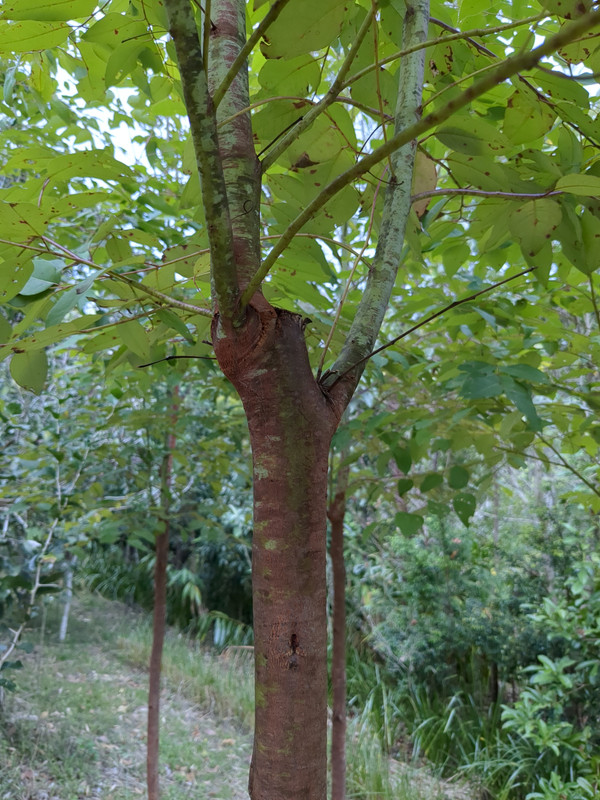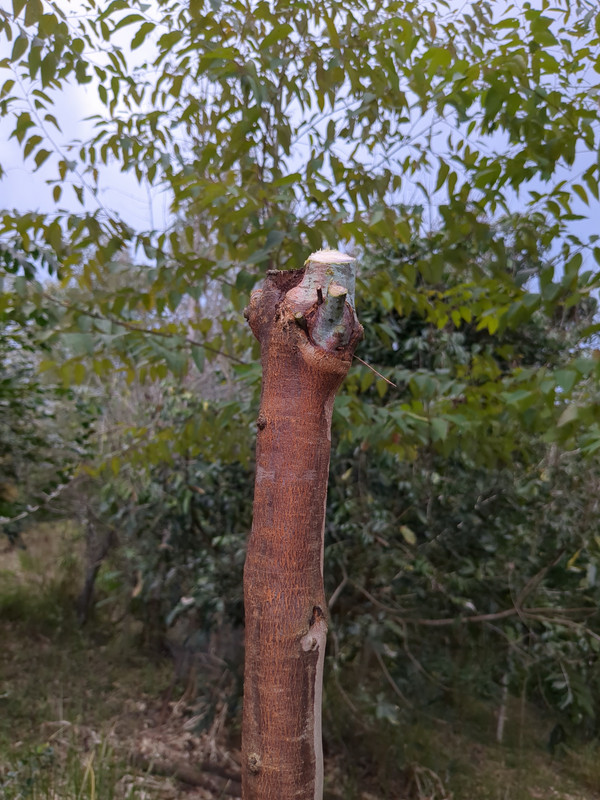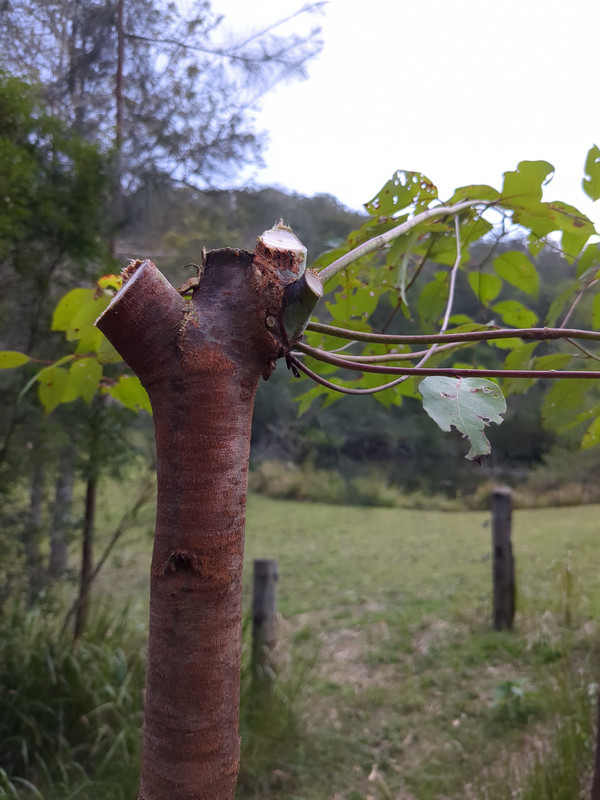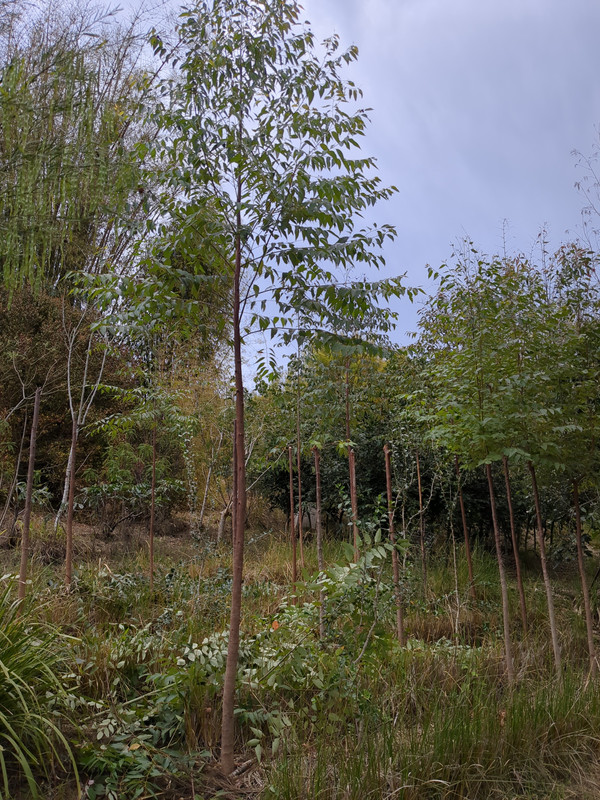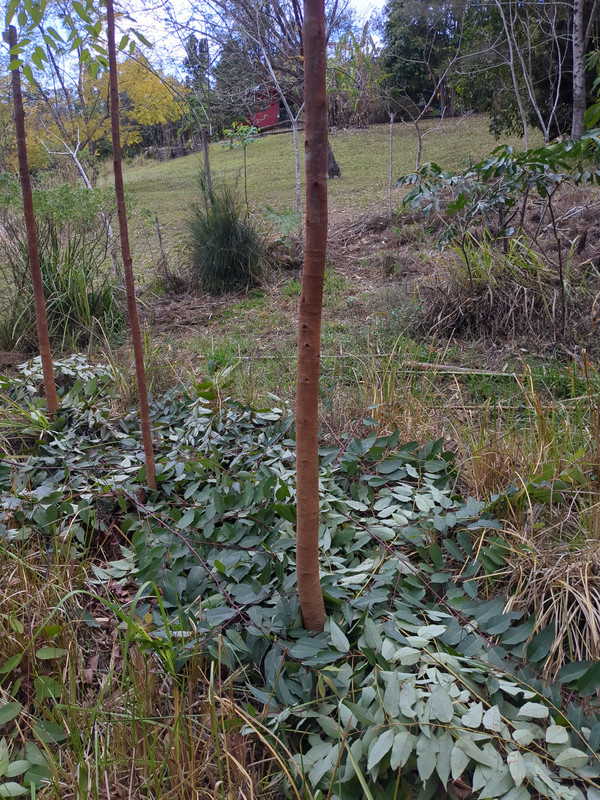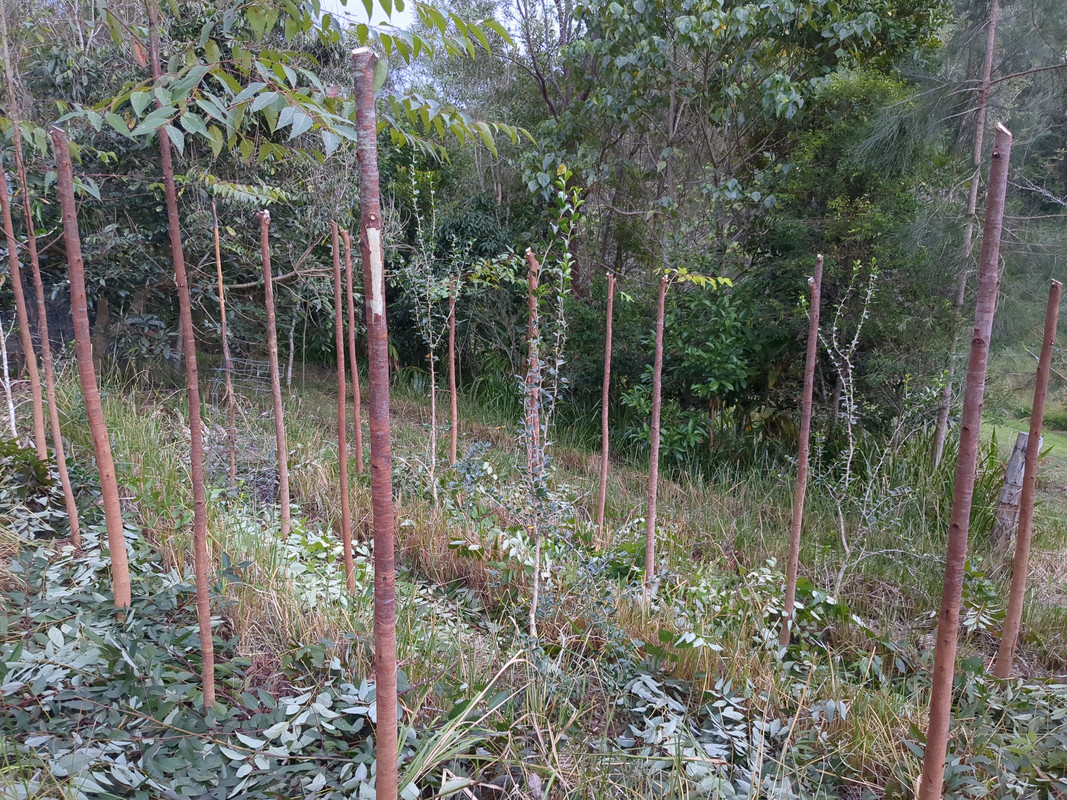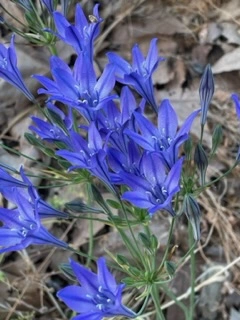Just kidding. These are Eucalyptus pollards before the cut was tidied up.
https://www.lowtechmagazine.com/2020/09/how-to-make-biomass-energy-sustainable-again.html/
Do Eucalyptus take well to pollarding? As you pointed out in another comment, we rarely pollard in the US but don’t you want the cut branches to be as small as possible? Is there a rule of thumb as far as what’s too big of a cut?
Very well, but unlike deciduous stuff they have to be done in Spring to Autumn because doing them in Winter there is a chance of death. The lignotuber of some species would lend itself to better coppice. Pollarding sawlogs on ladders is relatively common in agricultural settings like Syntropic and others.
If you are cutting them as small as possible, I’d assume the tree would go backwards in health. You need lots of leaf between cuts to keep the health up. These trees were planted at the same time, a percentage got the second cut, some were on their first and the main pictured one was pushing a little too big.
I’m no worldwide expert but I have done a lot of pollards and if I’m cutting for biomass, I don’t let them exceed 40mm, and will cut annually if they reach 20-40mm within that year. If the majority of shoots are below 20mm, then 2 or 3 years. Juvenile trees often need annual cuts before setting in into 2-3 year cycles. Mulberry is an exception, on wet years they need annual cuts before bud burst.
The Oak pollards of old for shipbuilding, would have had very large cuts on long cycles. I think they cycle mosaic coupes because you need sun to hit the shoots or they die. I think with our humid Summers, too big is a risk for a lot of species but Eucalyptus with their resistant timber could go reasonably big (evidenced by old tree loppings all over).
This Cali Mulberry looks like annual cuts.

Get this book from an American arborist - https://www.williambryantlogan.com/
That’s interesting about the seasonality—does that apply to all pruning of eucalyptus? I haven’t heard that, though they aren’t the most common tree in my area.
I wasn’t suggesting to cut them before the leaves have grown, just that I’ve always been taught that large wounds will heal slowly and put the tree at risk of decay, and so a properly done pollard needs regular trimming to keep them small. A lot of mulberries are pollarded incorrectly here with the branches allowed to reach maybe 6-12 inches in diameter. This seems to lead to a high risk of branch drop as well as significant decay entering the trunk.
While it’s an interesting method for wood production I’m not really sold on pollarding for urban areas. Seems like a very labor-intensive method for removing most of the beauty and benefits of a tree.
I think it is more to do with subtropical plants, they need to be actively growing to enhance the epicormic shoots where as a deciduous species forces a flow at bud burst. It’s why we ringbark in Winter, less chance of epicormic growth under wound.
Yeah, large wounds do cause decay but there are hundreds of year old pollards still existing today that would have had them. Next time you watch ‘The Princess Bride’ see if you can spot a few. 40mm is well within normal pruning cuts.
While it’s an interesting method for wood production I’m not really sold on pollarding for urban areas. Seems like a very labor-intensive method for removing most of the beauty and benefits of a tree.
Haha, that’s a very American statement. Read the book and see what you think. Technically, it’s a production pruning practice but culturally, I suppose it’s recognisable and homely. Check out some European styles, candelbra etc. Overall, I believe the technical aspect of it is very arboricutural, the cuts and callousing and it does increase age and safety of tree, but it is a style some don’t like.
Glad to see it was a joke. Lovely pollards. The thumbnail photo was so bad I couldn’t coppice.


